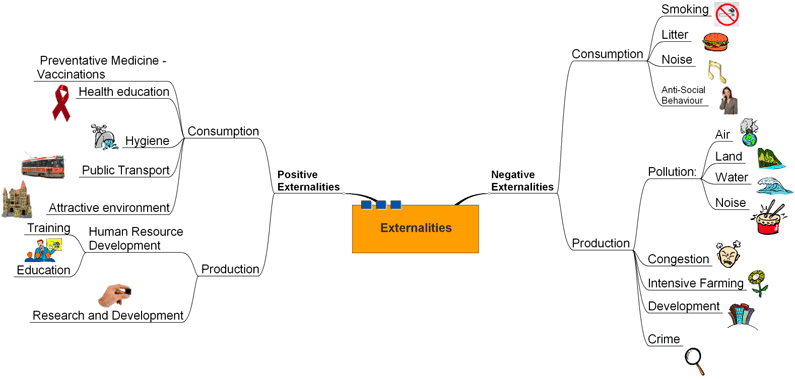 The idea of externalities is highly intuitive; it makes sense that the actions of one affect the happiness of others. A positive externality occurs when one's actions benefit people who were not directly involved in exchange.
The idea of externalities is highly intuitive; it makes sense that the actions of one affect the happiness of others. A positive externality occurs when one's actions benefit people who were not directly involved in exchange. More on externalities.
“the uncompensated impact of one person’s actions on the well-being of a bystander.”
 The idea of externalities is highly intuitive; it makes sense that the actions of one affect the happiness of others. A positive externality occurs when one's actions benefit people who were not directly involved in exchange.
The idea of externalities is highly intuitive; it makes sense that the actions of one affect the happiness of others. A positive externality occurs when one's actions benefit people who were not directly involved in exchange.
Quite the opposite is a negative externality because it imposes a cost on third parties. A factory polluting your air or water supply is a typical example of one. Many economists use the idea of externalities as the basis for public policy recommendations such as subsidies to offset positive and taxes to offset negative externalities.
We're all familiar with the concept of negative externalities: the behavior of one person has negative impacts on another person (or society as a whole), yet the person causing those impacts doesn't pay for them.

Writing about this concept as it applies to driving, Stephen Dubner and Steven Levitt, authors of the best-seller Freakonomics, point out that driving has three negative externalities: congestion, carbon emissions and traffic accidents.
They go on to quantify the cost to society of each of those negative externalities:
| Unfortunately, most of the options for implementing that tax--higher tolls, congestion pricing and gas taxes--are not very politically feasible, especially with today's high gas prices. | |
 |
They conclude that "with roughly three trillion miles driven each year producing more than $318 billion in externality costs, drivers should probably be taxed at least an extra 10 cents per mile if we want them to pay the full societal cost of their driving." |
So what to do? Well, according to Dubner and Levitt, the answer is to be found in raising automobile insurance rates.